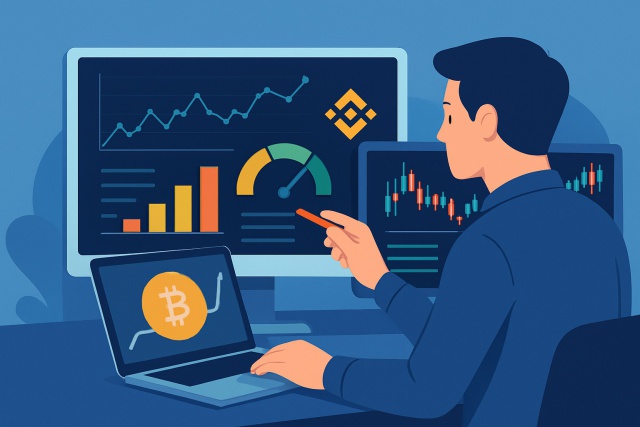
Using Notional Value to Manage Exposure in Binance Trades
Discover how understanding and managing notional value empowers Binance traders to accurately assess...
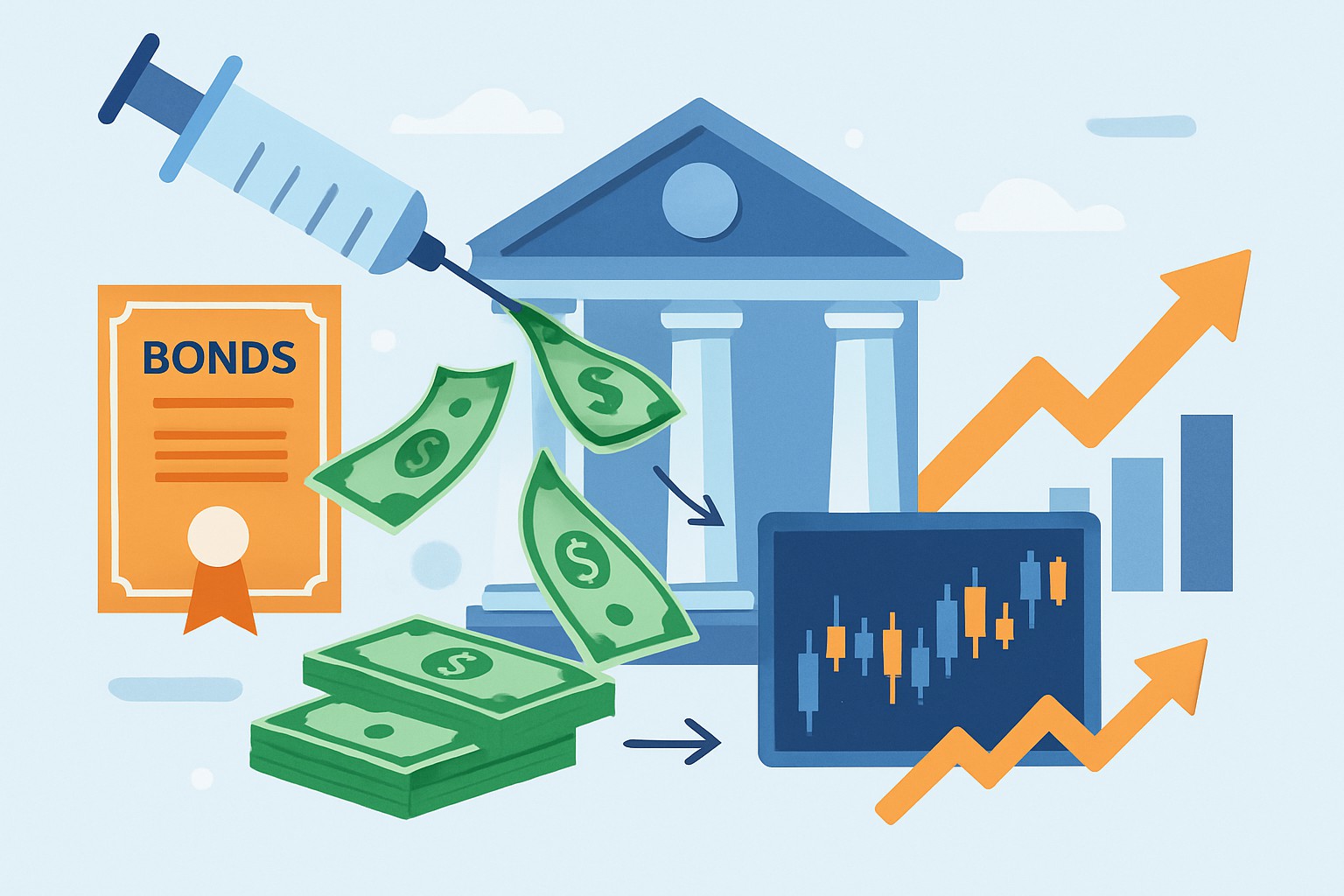
Quantitative easing (QE) is one of those economic policy tools everyone’s heard about but often finds puzzling. This article provides a clear QE definition and walks you through how it works. It also explains why it’s become a go-to strategy for steering economies through rough financial waters.
Quantitative easing is a rather unconventional monetary policy tool that central banks turn to when traditional methods—like cutting interest rates—have pretty much hit the wall and there is not much wiggle room left. It involves the central bank buying a hefty stack of financial assets to shove more money into the system, hoping to kickstart lending and investment in the process.
When we talk about 'central bank balance sheet expansion' we mean the central bank is increasing its assets by buying financial securities. This means it’s holding more on its books. Think of it like adding more cash to a household’s wallet to help cover the bills.
Understanding QE means really taking a close look at how central banks roll up their sleeves to buy assets, pump up the money supply and nudge borrowing costs down.
The central bank creates new money out of thin air electronically, giving the overall money supply a boost.
Then it takes that fresh cash and buys government bonds or other securities from banks and financial institutions.
These banks end up with more cash on hand for their assets which fattens their reserves.
With those extra reserves, banks are in a better position to lend more money to businesses and everyday individuals.
This lending spree usually drives borrowing costs down, especially for long-term loans that can be a headache.
As interest rates dip and credit gets easier to come by, spending and investment often pick up steam giving the economy a boost on its road to recovery.
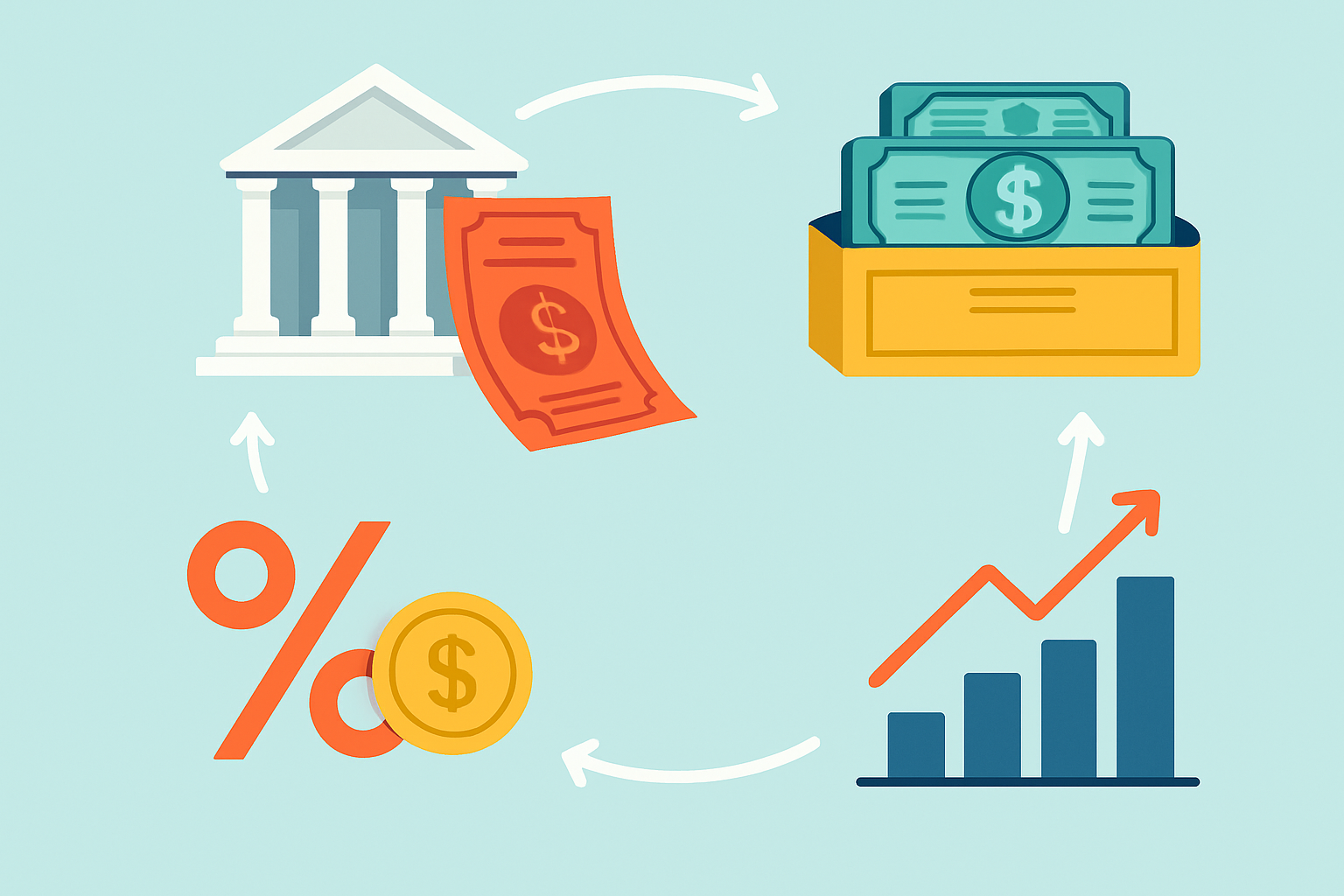
Visual diagram illustrating the quantitative easing cycle showing central bank actions, bank reserves changes, and economic impact
Central banks often roll out QE when the economy hits a rough patch or is in a crisis aiming to give sluggish gears a good shove. Once traditional interest rate cuts are driven down to nearly zero and have little fuel left, QE steps up to back financial markets, curb deflation risks, and save jobs by nudging banks to loosen their purse strings and encouraging individuals to open theirs.
"> "Quantitative easing is a key tool that central banks often turn to when the economic waters get choppy and interest rates hit rock bottom. It plays a key role in smoothing out recoveries and keeps the gears of financial markets turning without too many hiccups." — Ben Bernanke, former Chairman of the Federal Reserve
QE usually helps economic growth by nudging spending and investment. It can gently push inflation toward healthy target levels, help reduce unemployment and keep financial markets flush with liquidity—especially when the economic outlook feels shaky.
QE definitely has its perks but it’s not without pitfalls. These include accidentally pushing inflation through the roof if you go overboard, inflating asset bubbles that might burst at the worst time, making income inequality even stickier, and turning the whole process of unwinding the program into a delicate dance that could rattle the markets.
Many individuals often imagine QE as some sort of magic wand that sprinkles 'free money' around the economy or government but that is a bit of a stretch. In reality, QE is a carefully aimed monetary policy tool that requires a steady hand to nudge growth forward without letting inflation run wild.
QE has often been rolled out in the aftermath of major economic shocks, especially after the 2008 global financial crisis that rattled everyone’s confidence. The Federal Reserve, Bank of England and European Central Bank all jumped on the QE bandwagon to help steady the financial markets. They gave a nudge to economic growth and kept employment from taking a nosedive.
| Country | Year Initiated | Scale of Asset Purchases | Economic Context | Observed Effects |
|---|---|---|---|---|
| United States | 2008 | More than $4 trillion | Financial crisis and recession | Played a key role in lowering long-term interest rates, giving the economy a much-needed boost to start recovering |
| United Kingdom | 2009 | About £375 billion | Recession following the crisis | Improved lending conditions significantly and gave market confidence a welcome nudge |
| European Union | 2015 | Close to €2.6 trillion | Eurozone debt crisis | Helped steady the Eurozone economy and importantly kept deflation at bay, which was no small feat |
These historical cases highlight QE's knack for trimming borrowing costs and giving confidence a much-needed shot in the arm. They also shed light on a few wrinkles—like those frustrating delays before the effects ripple through the broader economy, and the tricky business of easing large asset holdings without rattling the markets.
Quantitative easing is just one piece of a much bigger economic toolkit. It typically works hand in hand with more traditional monetary policies like tweaking interest rates and offering forward guidance, not to mention fiscal moves such as government spending and tax adjustments.
Understanding the qe definition is a real game-changer for individuals, investors and policymakers alike. It helps them get a clearer read on economic signals and a better sense of how central bank decisions might actually unfold. Tools like TradingView and TrendSpider come in handy here offering clever ways to analyze market trends and the ripple effects of policy moves.
Are you tired of juggling multiple tools for your trading needs? TradingView is the all-in-one platform that streamlines your analysis and decision-making.
With its powerful charting capabilities, real-time data, and vibrant community, TradingView empowers traders like you to stay ahead of the market. Join thousands who trust TradingView for their trading success.
As a dedicated trader, you know the power of technical analysis in navigating the financial markets. TrendSpider is the cutting-edge tool you need to take your trading strategies to new heights. With its advanced charting capabilities and automated pattern recognition, TrendSpider empowers you to make informed decisions faster.
23 posts written
With 15 years of experience in commodity markets, Leila Amiri is transforming the field with her unique perspectives on sustainable investing and ESG integration.
Read Articles
Discover how understanding and managing notional value empowers Binance traders to accurately assess...
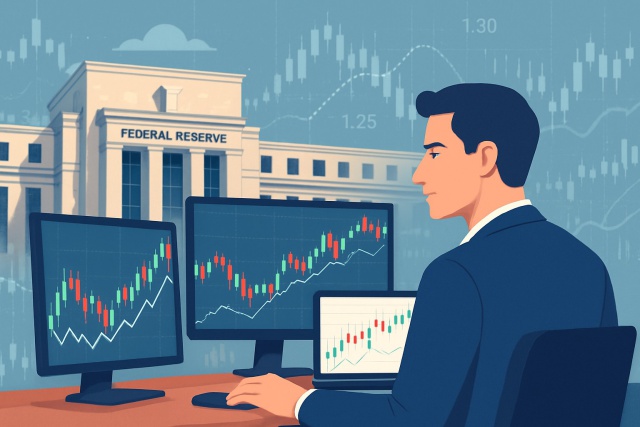
Learn how hawkish and dovish Federal Reserve communications impact forex markets. This guide breaks...
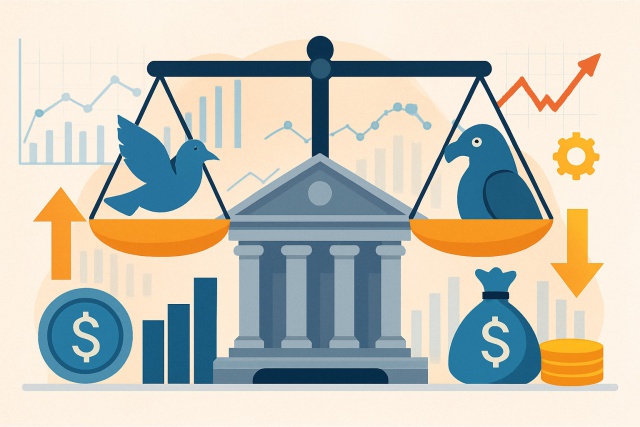
Understanding dovish vs hawkish policy shifts is essential for market participants as these changes...

Understand what drives the Saudi Arabian Riyal's fluctuations, from oil prices and monetary policy t...
